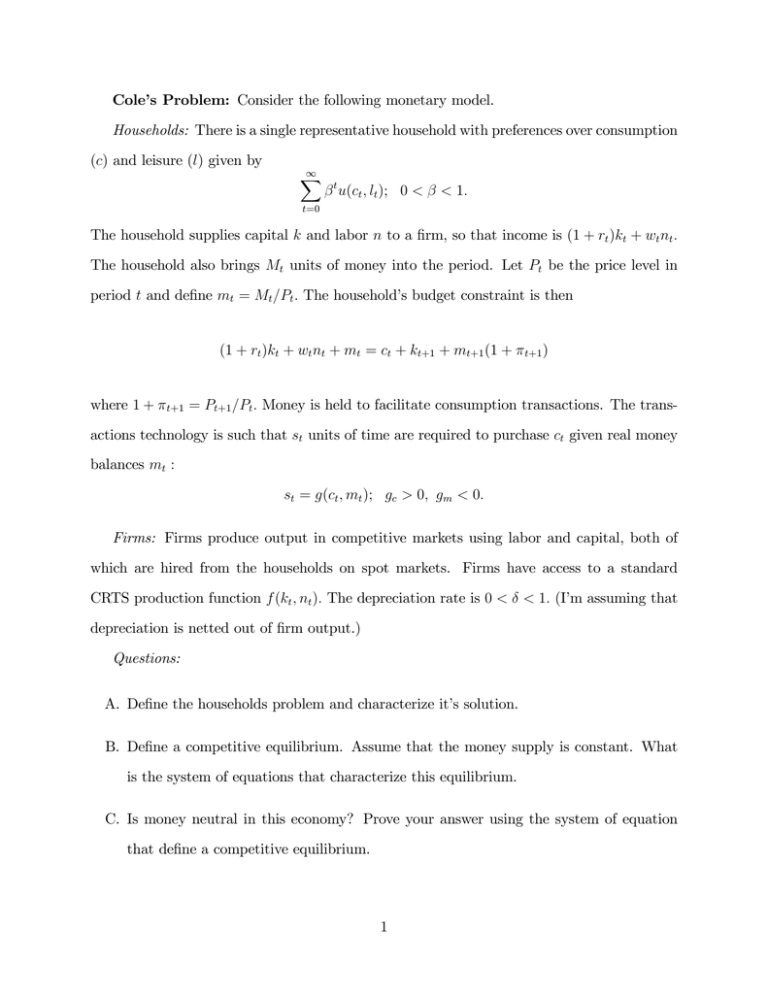Cole’s Problem: Consider the following monetary model.
advertisement

Cole’s Problem: Consider the following monetary model. Households: There is a single representative household with preferences over consumption (c) and leisure (l) given by 1 X t u(ct ; lt ); 0 < < 1: t=0 The household supplies capital k and labor n to a …rm, so that income is (1 + rt )kt + wt nt : The household also brings Mt units of money into the period. Let Pt be the price level in period t and de…ne mt = Mt =Pt : The household’s budget constraint is then (1 + rt )kt + wt nt + mt = ct + kt+1 + mt+1 (1 + where 1 + t+1 t+1 ) = Pt+1 =Pt : Money is held to facilitate consumption transactions. The trans- actions technology is such that st units of time are required to purchase ct given real money balances mt : st = g(ct ; mt ); gc > 0; gm < 0: Firms: Firms produce output in competitive markets using labor and capital, both of which are hired from the households on spot markets. Firms have access to a standard CRTS production function f (kt ; nt ): The depreciation rate is 0 < < 1: (I’m assuming that depreciation is netted out of …rm output.) Questions: A. De…ne the households problem and characterize it’s solution. B. De…ne a competitive equilibrium. Assume that the money supply is constant. What is the system of equations that characterize this equilibrium. C. Is money neutral in this economy? Prove your answer using the system of equation that de…ne a competitive equilibrium. 1 D. Would money still be neutral if the transactions technology used nominal money balances i.e., st = g(ct ; Mt )? Explain the intuition for your result. 2











